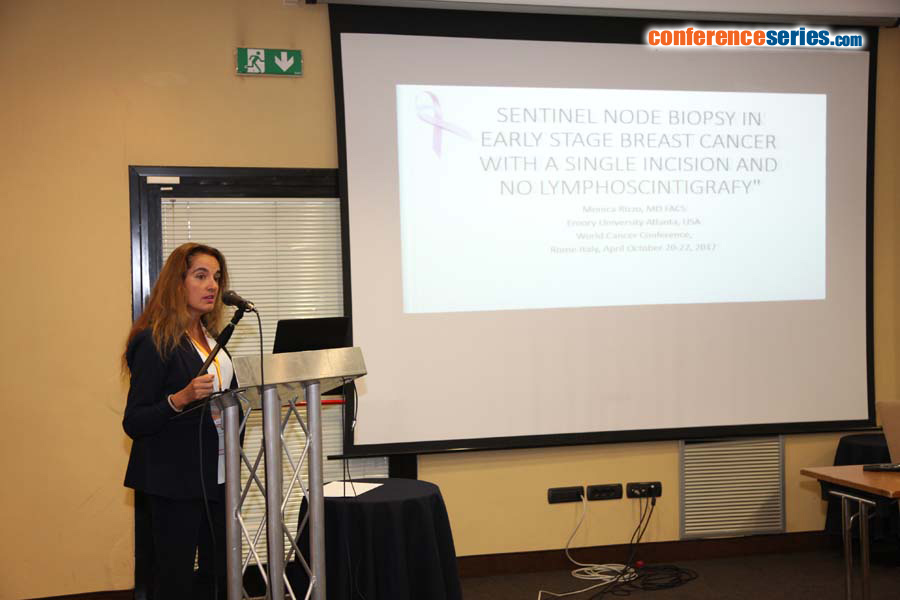
Monica Rizzo
Emory University School of Medicine, USA
Title: Single incision for early stage breast cancer: A minimally invasive approach
Biography
Biography: Monica Rizzo
Abstract
Breast conserving surgery (BCS) with sentinel lymph node (SLN) biopsy is standard of care for the treatment of early stage breast cancers. The use of a minimally-invasive single incision has not been rigorously compared to multi-incision traditional approach. A tertiary surgical oncology database was retrospectively reviewed over two years study period. The single incision approach used one incision to resect the tumor and the Lymphazurin-tagged axillary SLNs. The multi-incision group used a breast and a separate axillary incision. Patient satisfaction was collected in the first postoperative visit and documented as excellent, good and poor. BCS-SLN accounted for 110 patients with median age 63 years, with 64 (58%) cancers occurring in the upper outer quadrant (UOQ). There were 48 patients in the single incision group. A single incision approach was used in 41 (64%) of UOQ cancers (p<0.001), with a median of two SLNs. The single-incision approach showed no difference in percentage of biopsy clip removal or frequency of tumor-free margins and did not prolong operative time. Overall, eight patients (7.2%) had positive margins; seven underwent to re-excision and no residual disease was found, one patient refused additional surgery. Patient satisfaction was excellent in all patients treated with a single incision. There were no differences in complications or reoperations in the two groups. This study demonstrates that the single incision approach for BCS-SLN is safe and effective. This technique should be considered for upper outer quadrant breast cancers, and has the potential to improve patient satisfaction and cosmetic results.






